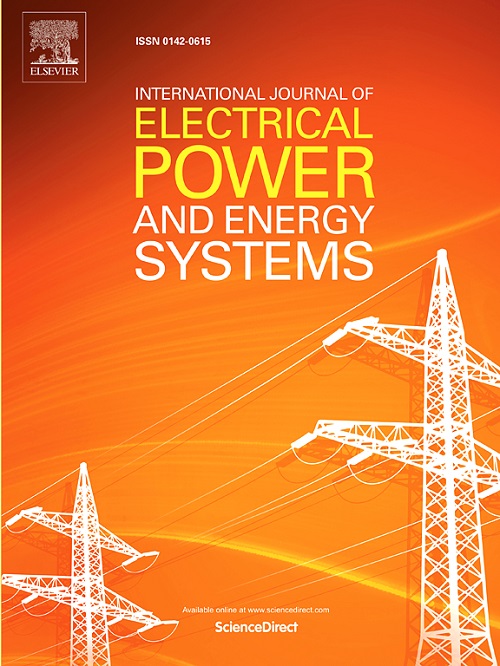考虑不同运行状态下超限风险的在线高维安全边界快速生成框架
IF 5
2区 工程技术
Q1 ENGINEERING, ELECTRICAL & ELECTRONIC
International Journal of Electrical Power & Energy Systems
Pub Date : 2025-05-20
DOI:10.1016/j.ijepes.2025.110743
引用次数: 0
摘要
热安全区域是评估电力系统随机运行模式安全裕度的重要工具。然而,随着可再生能源的大规模并网和电网规模的不断扩大,电网的运行方式变得越来越复杂和多样化。因此,基于历史数据构建的低维安全边界在适应性和时效性方面难以满足当前的需求。本文提出了一种基于潮流超限风险的高维安全边界在线生成方法,同时考虑了不同运行状态对降维安全边界准确性的影响。首先,采用无监督聚类方法识别电力系统不同运行状态对边界拟合的影响;其次,构建安全边界集,建立基于AdaBoost的风险预测模型。M2使用置信度评分来识别可能超过限制的潜在边界集。最后,将这些选定的安全边界特征用于生成对抗网络训练,使高维安全边界能够全面考虑多种场景。该方法通过机理分析增强了决策过程的可信度,同时提高了高维安全边界生成的速度和精度。在使用IEEE 39总线和HZPG系统中不同状态的运行数据的测试中,它达到了95%以上的准确率。在时效性方面,风险预测组件满足实时应用需求,边界生成过程可以在线进行。本文章由计算机程序翻译,如有差异,请以英文原文为准。
Online high-dimensional security boundary rapid generation framework considering over-limit risk for different operating states
The Thermal Security Region is a key tool for assessing the security margin of random operating modes in power systems. However, with the large-scale integration of renewable energy and the ongoing expansion of the power grid, operating modes have become increasingly complex and diverse. As a result, low-dimensional security boundaries constructed from historical data struggle to meet the current demands in terms of adaptability and timeliness. This study proposes an online generation method for high-dimensional security boundaries based on power flow over-limit risk, while considering the impact of different operating states on the accuracy of reduced-dimensional security boundaries. Firstly, the impact of different operating states on boundary fitting in the power system is identified using unsupervised clustering. Next, a security boundary set is constructed, and a risk prediction model based on AdaBoost.M2 is employed to identify potential boundary sets that may exceed limits, using confidence scoring. Finally, these selected security boundary features are utilized for generative adversarial network training, enabling the high-dimensional security boundaries to comprehensively account for multiple scenarios. This method enhances the credibility of the decision-making process through mechanism analysis while improving the speed and accuracy of high-dimensional security boundary generation. In tests using operational data from different states within the IEEE 39-bus and HZPG systems, it achieved an accuracy of over 95%. In terms of timeliness, the risk prediction component satisfies real-time application requirements, and the boundary generation process can be performed online.
求助全文
通过发布文献求助,成功后即可免费获取论文全文。
去求助
来源期刊
CiteScore
12.10
自引率
17.30%
发文量
1022
审稿时长
51 days
期刊介绍:
The journal covers theoretical developments in electrical power and energy systems and their applications. The coverage embraces: generation and network planning; reliability; long and short term operation; expert systems; neural networks; object oriented systems; system control centres; database and information systems; stock and parameter estimation; system security and adequacy; network theory, modelling and computation; small and large system dynamics; dynamic model identification; on-line control including load and switching control; protection; distribution systems; energy economics; impact of non-conventional systems; and man-machine interfaces.
As well as original research papers, the journal publishes short contributions, book reviews and conference reports. All papers are peer-reviewed by at least two referees.

 求助内容:
求助内容: 应助结果提醒方式:
应助结果提醒方式:


